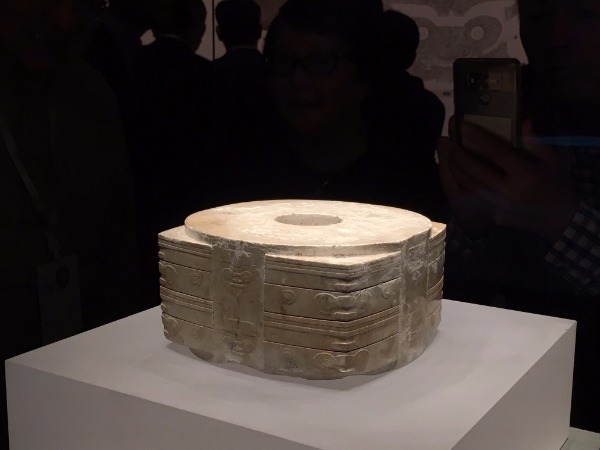 |
|
"king of cong" from Zhejiang province unveils a prosperous age of jade.[Photo by Wang Kaihao/China Daily] |
"To be frank, you would have to wait a very long time before you see another exhibition featuring such a star-studded lineup of national treasures from all around the country," he adds.
And he is not exaggerating.
While cultural relic exhibitions touring overseas often present a range of different eras of Chinese history over the ages to offer the foreign public a snapshot in time, domestic visitors are less used to seeing show that spans millennia - other than the permanent Ancient China exhibition at the National Museum of China in Beijing.
The exhibits appearing in Changsha have been loaned by 23 museums nationwide, and the show will run for two months.
Other than the main jade piece, many of the exhibits also frequently appear in school history textbooks.
For example, a square container from the Qin State during the Warring States period (475-221 BC), which is on loan from a collection at the Shanghai Museum, is the earliest-known archaeological evidence of a national standard measuring instrument.
According to its inscriptions, the measuring device was manufactured in 344 BC and used by Qinshihuang, the first emperor of China, as the uniform scale for the entire nation in 221 BC when he conquered the other warring states and united the country.
Some examples of government documents, which were unearthed from Liye town in Xiangxi, Hunan province, also tell how Qinshihuang tried to realize his political ambitions by promulgating a new series of laws.